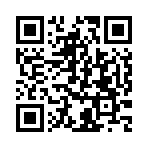Chapter 11 – My First Keitai
While North America and Europe were still stumbling with WAP, Japan was enjoying the world’s first successful mobile Internet. It was called i-mode and was a product of the Japanese carrier NTT DoCoMo. I’ve read two excellent books on the subject — John C. Beck’s DoCoMo: Japan’s Wireless Tsunami and Mari Matsunaga’s Birth of i-mode — and as I understand it there were two deciding factors that made DoCoMo’s creation an instant hit: First, Internet for home computers was prohibitively expensive in Japan and second, Japanese users were quite all right with a pay-per-page walled garden that was more like AOL than the wild west of the open web.
I saw my first i-mode phone (keitai, to use the proper Japanese term) during my 2001 studies at The Canadian Film Centre. It was the property of a visiting lecturer — I don’t even remember what the talk was about, all I remember is the phone. It was shocking red and impossibly thin. It was like holding the future in my hand.
Later that summer I paid my first-ever visit to Tokyo, ostensibly to figure out my “career crisis” — that is, how to transfer my creative skills from old media to new. But truth be told I really just wanted to check out the keitai culture and use an i-mode phone. Some money I’d made from a TV show made the trip possible; for the keitai I found a company operating out of Hawaii called Japan Cell Phone Rentals. They’re still in business today. My handset would be waiting for me at my Tokyo hotel on the day of my arrival; upon departure I would simply put everything into a return mailer and leave it at the front desk.
Sure enough, upon check-in at the Shibuya Excel Hotel Tokyu I was handed a small package; inside was an i-mode enabled Panasonic P503i HYPER. I’m fairly certain that this particular unit was meant for a female user — the case was “dusty rose” (pink) — but I didn’t care one bit. Nor did I care that I couldn’t actually do much with it, what with the minor hurdle of not being able to read Japanese and all. I did manage to pull up an English-language i-mode menu, and browsed The Daily Yomiuri every morning over breakfast at my hotel. Like a boss.
Words cannot do justice to the geeky joy I felt walking the streets of Tokyo, wandering past the racks of display phones in Akihabara, seeing people on trains silently hammering out messages to friends they were on their way to meet… I was thrilled to be in the company of a populace who understood that mobiles could do so much more than make calls. And my god, the handsets were beautiful — colour screens, clear as day with brightly-coloured housings to match. I had read somewhere that Japanese keitai users preferred clamshell phones by and large, but you could procure pretty much any form factor you wanted in this, the world’s most advanced market for mobile phones.
On the last day of my trip I dutifully sealed my keitai into its return mailer and dropped it off at my hotel’s front desk. On the express train to the airport I watched out the window as Tokyo slipped away from me. Was it brave or stupid to transport myself to the other side of the planet on a whim? I still don’t know… I learned a scant few Japanese phrases while I was there, mostly ways to apologize — just paying for something at a convenience store was a struggle. But folly or not, this was a once-in-a-lifetime experience that I’d never forget. And I never thought I’d be back in that part of the world so soon.



Yes , trully amazing story , I live in Romania , eastern europe , former communist country like north korea . The i-mode lifestyle in Japan seems fascinating for an aspiring geek . I am 22 now , I never had money to go there but the I-mode inspired me , even if the service failed in Europe and Romania of course . Now , thanks to cheap android devices , we have our own I-mode , even Takeshi Natsuno , the father of I-mode said he is proud of i-phone . When I was 15 , in 2005 I just entered high-school , my mom got me an i-mode device that worked on GSM 2G . The I-mode did not work of course , but the clamshell design took my breath away , it was a nec n21 i , the phone was very cheap ( I live in Romania ) , so I searched for I-mode . The truth is , now I am happy , we have our android , and the mobile internet is booming now . Oh well , I am happy to hear that I am not the only one fascinated about this exotic service . Send me back an e-mail if u want ! 😀
Hi, and thanks for the comment!
If you can find it, that Mari Matsunaga book is pretty great. She is the mother of i-mode after all. 🙂
And I had forgotten that i-mode was available in Europe for a while…